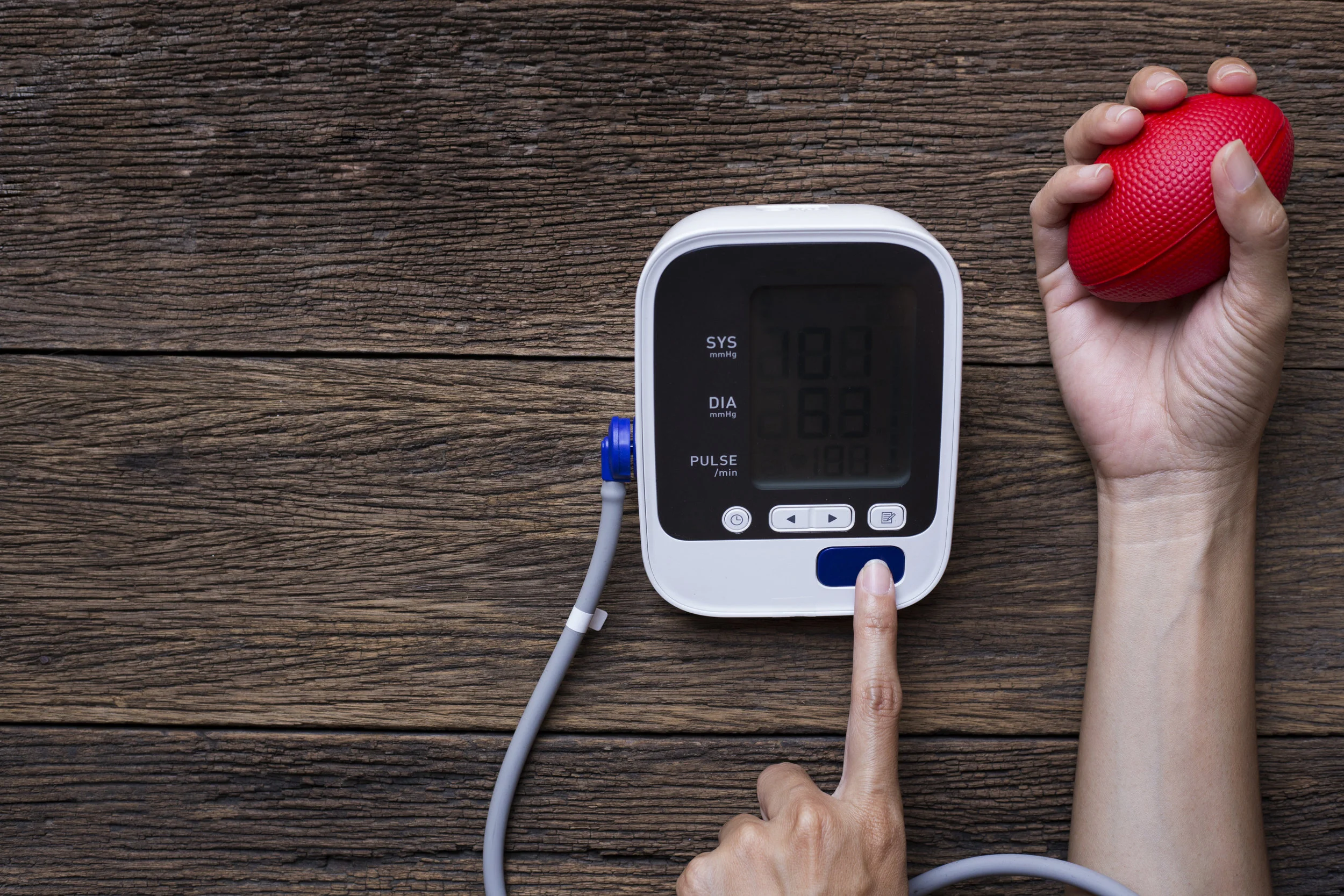What is hypertension?
Blood pressure is the amount of force the blood being pumped from our heart exerts on our vessels, without it our cardiovascular system wouldn’t work. When this pressure is high we call this HYPERTENSION which means your blood is pumping with a force greater than normal through your arteries.
How does this happen?
Genetic and lifestyle factors play a considerable part. Over time, fatty plaques (atherosclerosis) can build up on the inside of our arteries, narrowing our blood vessels and making the same amount of blood flow through a narrower space with greater force and pressure. Healthy blood vessels are important too, the ability of our blood vessels to remain flexible and to be able to dilate and contract can be related to our lifestyle choices. Kidney function can be affected by dietary factors also, and stress can play apart because of the adrenal glands role in regulating kidney function.
How do I know I have hypertension?
If you have ever taken your blood pressure before you would have noticed two numbers, the first/top number refers to systolic pressure which is the pressure in the blood vessels when the heart contracts, pushing blood out of the heart to the rest of the body. The diastolic pressure, which is the bottom/second number is the pressure when the heart is relaxed, filling with blood. These two values are usually expressed together for example “120 over 80” and when these numbers are too high, this indicates that we are hypertensive.
There are certain ranges they call in which put us in different risk categories, generally the higher the systolic number is the greater risk with have of hypertension. The normal ranges are 120-129/80-84mmHg, once we surpass this range to above 145/90mmHg we care considered to start being hypertension.
So how can exercise help?
Research has found that exercise is an extremely potent treatment for hypertension, reducing blood pressure levels by around 6-7 mmHg, reducing risks of death from strokes by 14% and death from Coronary artery disease by 9%. This is because in the long term, exercise changes the blood vessels to a better shape where they can become more elastic, pumping blood around our body more easily!
For specifically reducing blood pressure it is important to partake in steady state moderate to vigorous aerobic exercise for around 20-25 minutes a day. This can be as easy as going for a walk or cycling on a bike to a level of feeling 6/10. Studies have proven that simply through aerobic exercise systolic blood pressure can reduce by 5 mmHg and diastolic can reduce by 2-3 mmHg.
Studies have also found strength training helps to reduce blood pressure if performed around 2 times a week, with exercises targeting the whole body. Doing approximately 8 or more exercises can reduce systolic blood pressure by 3-6 mmHg and diastolic blood pressure by 3-5 mmHg. So lifting weights helps too!
When beginning exercises keep in mind that medications also play a role with blood pressure to ensure that you consult your doctor first about these. The most important thing is to get started. You can let exercise be medicine for your hypertension and if you need some guidance about the best choices for you, help is at hand.

